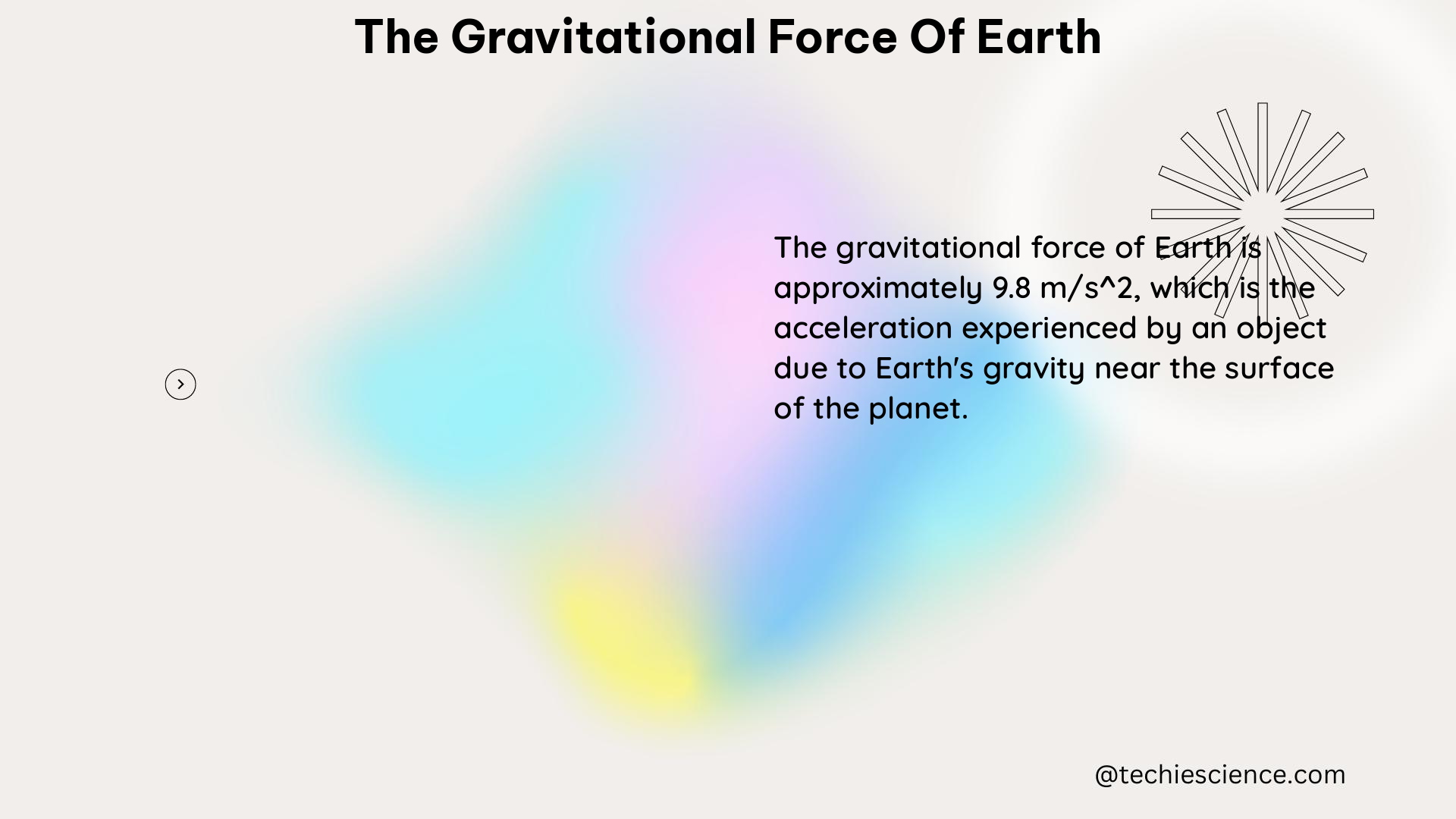The gravitational force of the Earth, also known as the gravitational field strength or simply “gravity,” is a fundamental aspect of our lives and the universe at large. It is the force that pulls us towards the center of the Earth and keeps our feet on the ground, and it is also responsible for the orbits of planets and moons in our solar system, as well as the formation of galaxies and black holes.
Understanding the Cavendish Experiment
One of the most famous and influential experiments in the history of physics is the Cavendish experiment, performed in 1797-1798 by English scientist Henry Cavendish. This experiment was the first to measure the force of gravity between two objects, and it did so by using a torsion balance to measure the gravitational attraction between two pairs of lead spheres.
The apparatus consisted of a six-foot (1.8 m) wooden rod horizontally suspended from a wire, with two 2-inch-diameter (51 mm), 1.61-pound (0.73 kg) lead spheres attached to each end. Two massive 12-inch (300 mm), 348-pound (158 kg) lead balls were suspended separately and could be positioned away from or to either side of the smaller balls. By measuring the deflection of the torsion balance rod and knowing the twisting force (torque) of the wire for a given angle, Cavendish was able to determine the force between the pairs of masses.
Calculating the Earth’s Density
Cavendish’s experiment allowed him to calculate the density of the Earth, which he found to be 5.448±0.033 times that of water. This value is close to 80% of the density of liquid iron, suggesting the existence of a dense iron core at the center of the Earth. Today, the accepted value for the Earth’s density is 5.514 g/cm³, which is only slightly larger than Cavendish’s original value.
The formulation of Newtonian gravity in terms of a gravitational constant (G) did not become standard until long after Cavendish’s time. However, Cavendish expressed his result in terms of the density of the Earth, which he referred to as “weighing the world.” Later authors reformulated his results in modern terms, using the formula G=gR²earth/Mearth, where g is the acceleration due to gravity, Rearth is the radius of the Earth, and Mearth is the mass of the Earth. Cavendish’s value for the Earth’s density, 5.448 g cm−3, gives G*= 6.74×10 −11m 3kg –1s −2, which differs by only 1% from the 2014 CODATA value of 6.67408×10 −11 m 3 kg −1 s −2.
Measuring the Gravitational Constant G

Today, physicists often use units where the gravitational constant takes a different form, such as the Gaussian gravitational constant used in space dynamics. The Cavendish experiment can be considered as a measurement of this constant, and it remains one of the most precise ways to try to measure G in the laboratory.
Advances in Measuring G
Researchers around the world are developing more sophisticated versions of the torsion balance design, and other techniques such as atom interferometry are also being used to measure the strength of gravity at short distance scales. These techniques have allowed for more precise measurements of the gravitational constant G, with the latest CODATA value being 6.67408(31)×10−11 m³⋅kg−1⋅s−2.
Numerical Examples
To illustrate the application of the gravitational constant G, let’s consider a few numerical examples:
- Calculating the gravitational force between two 1 kg masses separated by a distance of 1 meter:
-
F = G × (m1 × m2) / r² = 6.67408×10−11 × (1 × 1) / (1)² = 6.67408×10−11 N
-
Calculating the acceleration due to gravity on the surface of the Earth:
-
g = G × Mearth / Rearth² = 6.67408×10−11 × 5.972×10^24 / (6.371×10^6)² = 9.80665 m/s²
-
Calculating the gravitational potential energy of a 50 kg object on the surface of the Earth:
- U = –G × Mearth × m / Rearth = -6.67408×10−11 × 5.972×10^24 × 50 / 6.371×10^6 = -3.12×10^6 J
These examples demonstrate the practical applications of the gravitational constant G and the importance of understanding the gravitational force of the Earth.
Conclusion
The gravitational force of the Earth is a fundamental aspect of our lives and the universe at large, and it has been studied and measured using a variety of techniques and experiments. The Cavendish experiment, performed in 1797-1798, was the first to measure the force of gravity between two objects and allowed scientists to calculate the density of the Earth, which is now known to be 5.514 g/cm³. The formulation of Newtonian gravity in terms of a gravitational constant, G, did not become standard until long after Cavendish’s time, but his experiment remains one of the most precise ways to try to measure G in the laboratory.
References:
- Cavendish experiment – Wikipedia: https://en.wikipedia.org/wiki/Cavendish_experiment
- Has gravity ever been experimentally measured between two atoms?: https://physics.stackexchange.com/questions/130594/has-gravity-ever-been-experimentally-measured-between-two-atoms
- How Do You Measure the Strength of Gravity? | NIST: https://www.nist.gov/how-do-you-measure-it/how-do-you-measure-strength-gravity
- Physicists Measure the Gravitational Force between the Smallest Masses Yet: https://www.scientificamerican.com/article/physicists-measure-the-gravitational-force-between-the-smallest-masses-yet/

The lambdageeks.com Core SME Team is a group of experienced subject matter experts from diverse scientific and technical fields including Physics, Chemistry, Technology,Electronics & Electrical Engineering, Automotive, Mechanical Engineering. Our team collaborates to create high-quality, well-researched articles on a wide range of science and technology topics for the lambdageeks.com website.
All Our Senior SME are having more than 7 Years of experience in the respective fields . They are either Working Industry Professionals or assocaited With different Universities. Refer Our Authors Page to get to know About our Core SMEs.